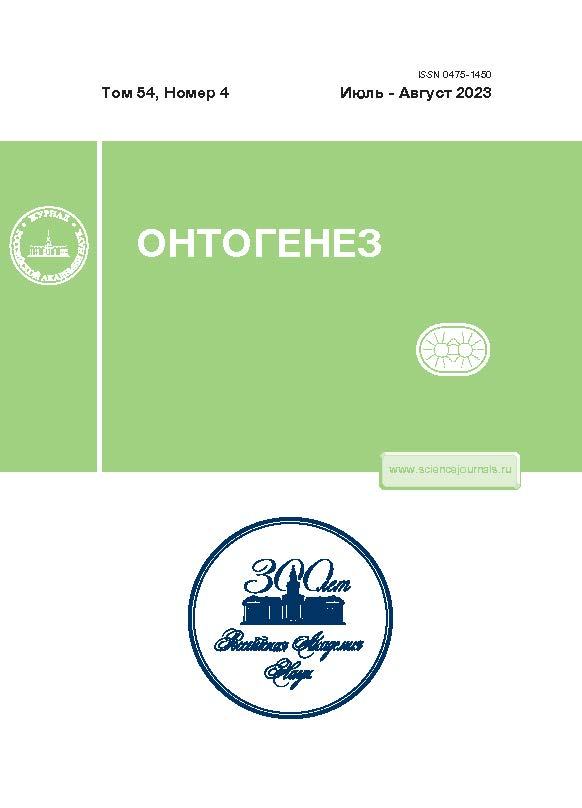卷 54, 编号 4 (2023)
Original study articles
Reprogramming of Primed Human Pluripotent Stem Cells into a Naive State
摘要
Human pluripotent stem cells (PSCs) can be maintained in a naive or primed state of pluripotency in vitro. Being in one state or another, PSCs have different potentials of differentiation into extra-embryonic and germinal derived cells of the embryo. In terms of the expression profile and epigenetic pattern of the genome, naive PSCs are comparable to the cells of the inner cell mass of the blastocyst, while primed PSCs are similar in their characteristics to the cells of the postimplantation epiblast. Reprogramming of primed PSCs into the naive state and maintenance of naïve PSCs in culture is a crucial issue in studying the epigenetic processes of preimplantation development of the human embryo and methods for efficient differentiation of PSCs into derivatives of embryonic and extra-embryonic cells. The aim of this work is to reprogram primed induced pluripotent stem cells (iPSCs) into a naïve pluripotent state to obtain a homogeneous population of iPSCs according to the state of pluripotency in culture. The task of this work is to develop a protocol and conditions for reprogramming primed iPSCs into a naive state of pluripotency. In this work, naive iPSCs were obtained under conditions of application of growth factors FGF2, TGFβ1 and inhibition of GSK3β and the MEK/ERK signaling pathway (2iF medium). Pretreatment of primed iPSCs with histone deacetylase inhibitors (HDACi) changes the cell morphology and gene expression profile of PSCs towards an earlier state of pluripotency. Using pretreatment of HDACi primed iPSCs followed by maintaining in 2iF medium, we obtained naive iPSCs comparable in colony morphology and expression profile of naive state marker genes with control naive iPSCs obtained in RSeT medium. In order to confirm the naive state of pluripotency of iPSCs obtained 2iF conditions, it is necessary to carry out single cell RNA sequencing.
 241-257
241-257


Temperature Compensation of Energy Metabolism in Tadpoles of the Marsh Frog from Different Populations of the Kamchatka Peninsula (Pelophylax ridibundus Pallas 1771, Anura: Amphibia)
摘要
The study of the peculiarities of energy metabolism in populations of the marsh frog Pelophylax ridibundus from several reservoirs of the Kamchatka peninsula with different temperature regimes revealed the temperature compensation of this parameter in tadpoles. The linear dependence of the tadpoles metabolic rate on the average annual temperature of habitat was shown. It was found that stable inherited differences in the intensity of tadpoles metabolism were formed in 30–20 years from the moment of the first introduction of the species into the reservoirs of Kamchatka. An assumption is made about the limit of adaptive diapason of the species for the development stage of 39–40 tadpoles of the marsh frog.
 258-265
258-265


ИСТОРИЯ БИОЛОГИИ РАЗВИТИЯ
The Birth of Morphomechanics
摘要
At the early 1970s, in the USSR, L.V. Beloussov and his colleagues from Moscow State University put forward a hypothesis about the possible role of mechanical forces and stresses in the organization of developing living systems. The authors discovered stage-specific patterns of mechanical stresses during amphibian embryonic development and showed that mechanical stresses are necessary for the organization of morphogenesis and cellular differentiation. As a result of the long-term work of Moscow embryologists, morphomechanics, new interdisciplinary science at the intersection of developmental biology and mechanics, was born. In the XXI century, mechanisms of mechano-dependent gene expression, cellular and nuclear mechanotransduction are intensively studied. The idea of the organizing role of mechanical forces and stresses in living systems remains very relevant.
 266-280
266-280











